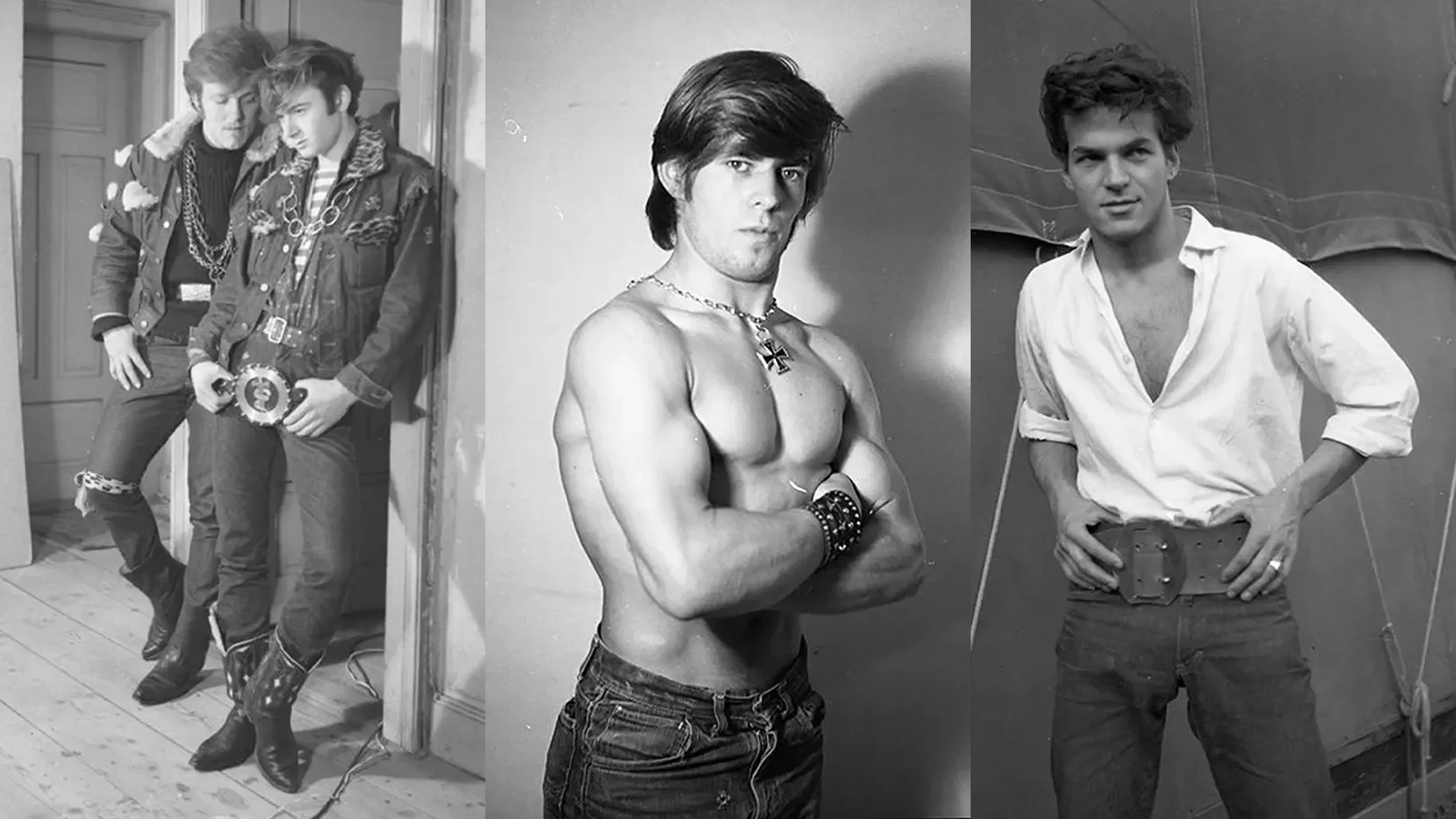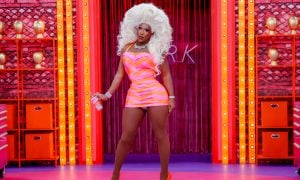By day, Karlheinz Weinberger was a warehouse clerk. But by night—and any free moment in between—he was a man with a camera, on a decades-long mission to document a side of masculinity that mainstream postwar Swiss culture tried to ignore.
Weinberger (1921–2006) is now recognized as one of Switzerland’s most fascinating photographers, known for his gritty, intimate portraits of rebellious youth and raw athleticism. His lens focused on outsiders, rule-breakers, and anyone who lived boldly beyond convention.
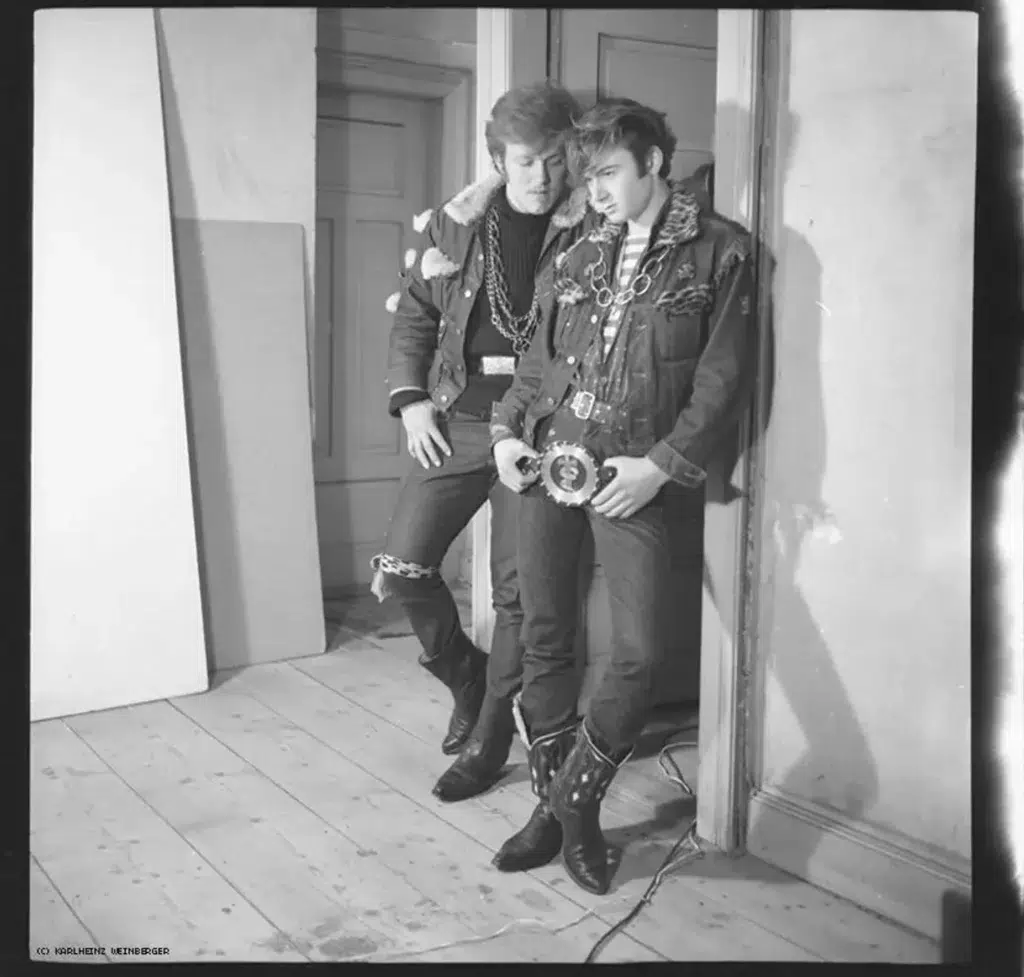
Photo: Karlheinz Weinberger

Photo: Karlheinz Weinberger
Rebels With a Whole New Cause
Weinberger’s most iconic work began in 1958, when a chance encounter changed the course of his creative life. While wandering the streets of Zurich, he met a young man whose greased hair, denim jacket, and cowboy boots immediately caught his attention.
Through this stylish stranger, Weinberger was introduced to a loosely connected group of working-class teens. They weren’t just going against the grain—they were rejecting the clean-cut, postwar Swiss ideal altogether. These teens were known as the “Halbstarken,” or “half-strong”—a term that implied they were immature, misguided, or just plain trouble.
Inspired by 1950s American film icons like Marlon Brando, James Dean, and Elvis Presley, the Halbstarken developed their own flamboyant takes on rebellion. They styled their hair into exaggerated pompadours, wore massive belt buckles and handmade jewelry, and customized their denim with striking imagery—often featuring their movie idols clipped from fan magazines.
Weinberger captured them everywhere: in his modest apartment, on Zurich’s carnival circuit, and in alleyways where they posed with smirks and smoldering stares. His photographs documented not just their aesthetic, but their unapologetic individuality. Today, that body of work remains the most celebrated part of his 50-year artistic career.
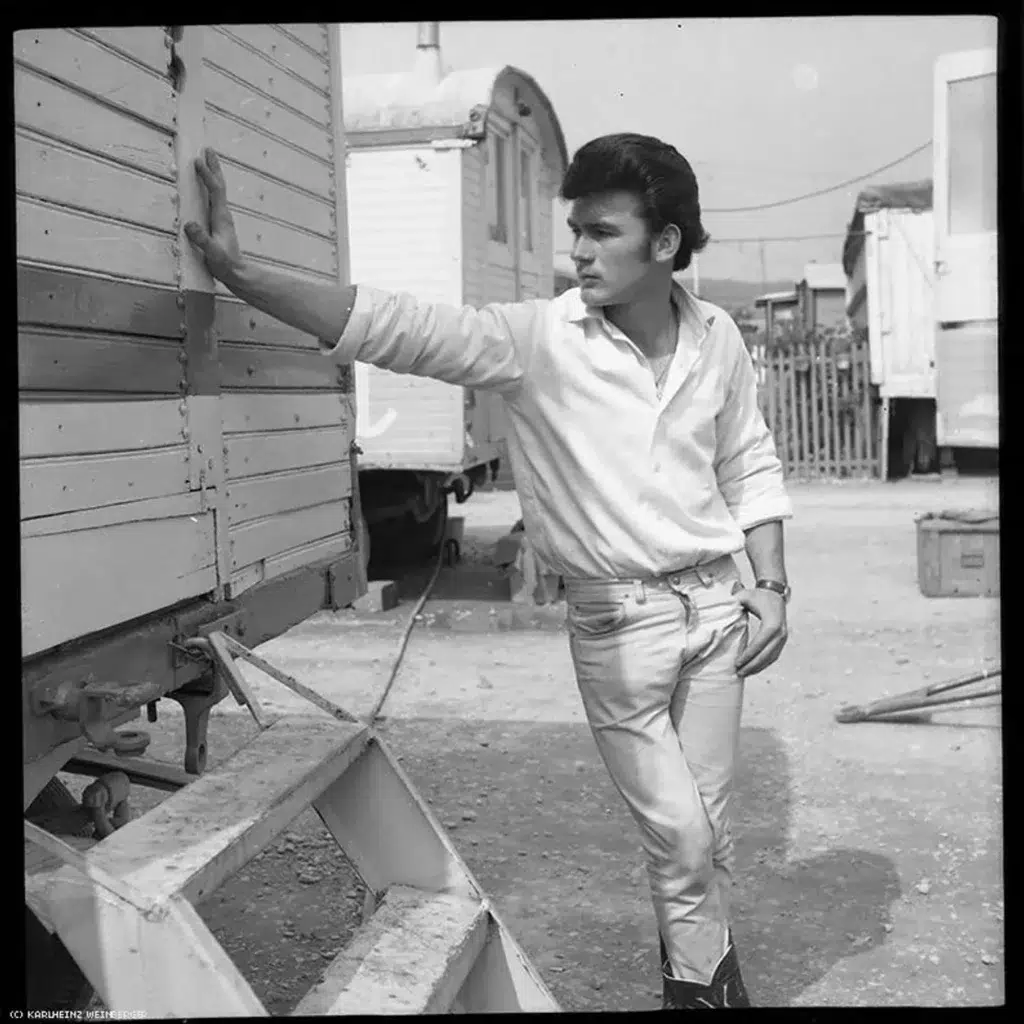
Photo: Karlheinz Weinberger
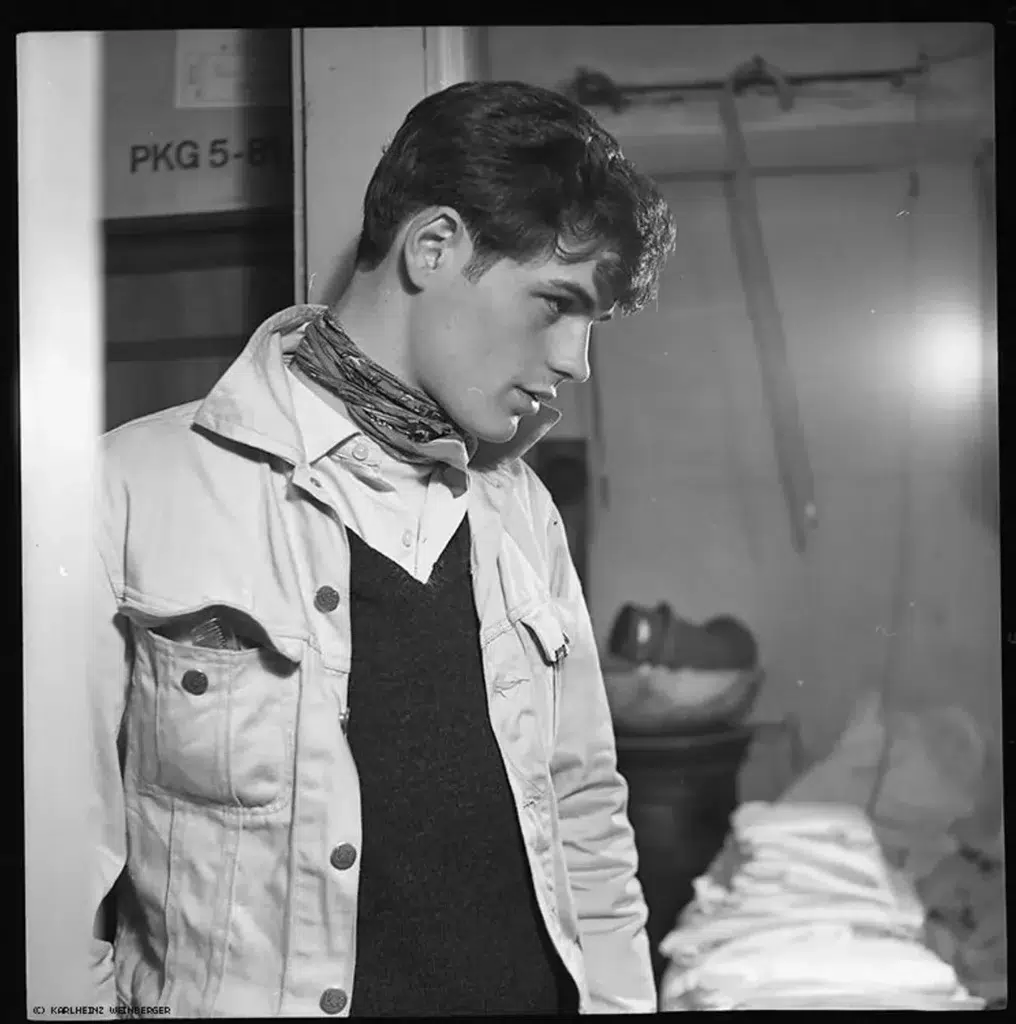
Photo: Karlheinz Weinberger
A Passion for the Physical
But Weinberger’s curiosity extended far beyond subcultural style. In the 1960s, he began photographing athletes, turning his attention to sports photography with the same intensity he brought to his portraits of youth.
The recently released Karlheinz Weinberger – Sports (Vol. 2) showcases this lesser-known but deeply compelling side of his work. Published by Sturm & Drang, the volume features images captured at bike races, wrestling matches, and weightlifting competitions across Switzerland and East Germany.
Weinberger, who worked for sports newspapers and magazines at the time, used his assignments as an opportunity to study the male form in motion. His photos are not just about athleticism—they’re about admiration, desire, and the power of the human body.
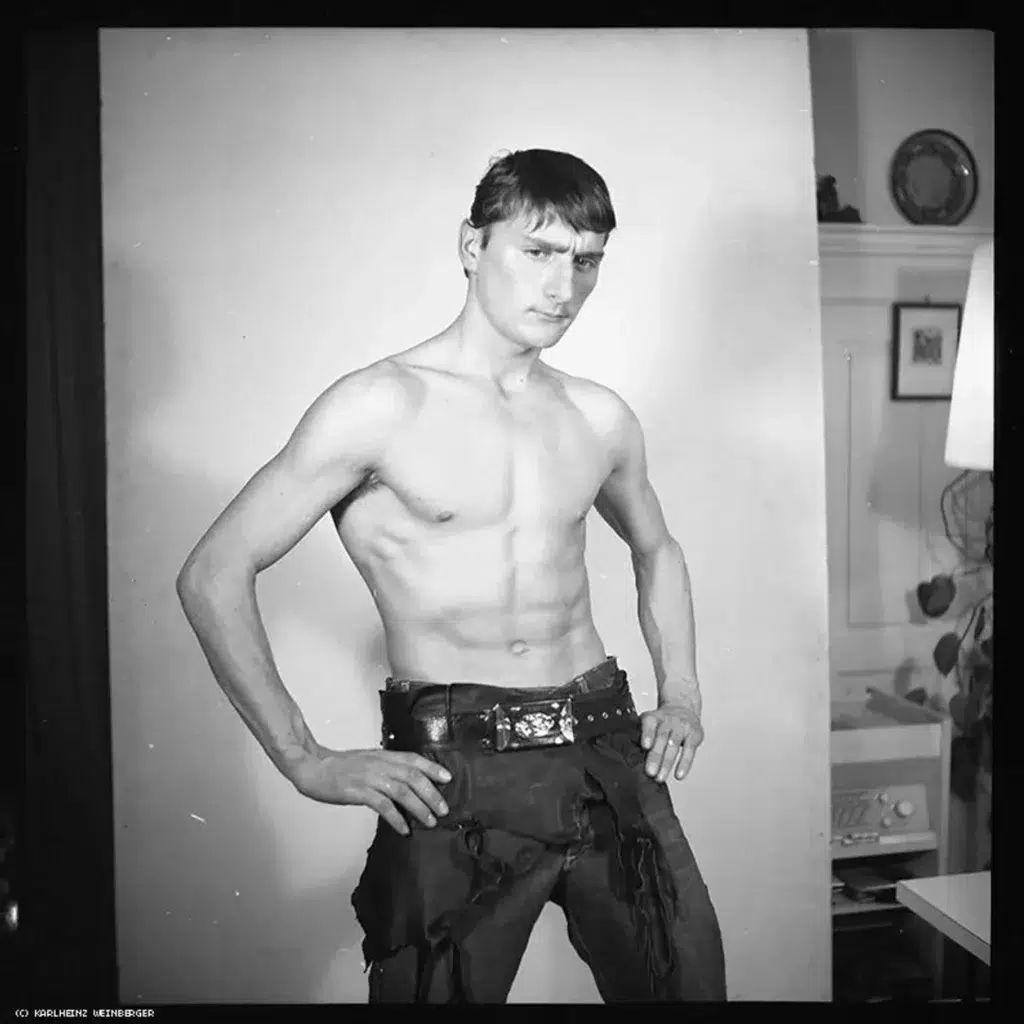
Photo: Karlheinz Weinberger
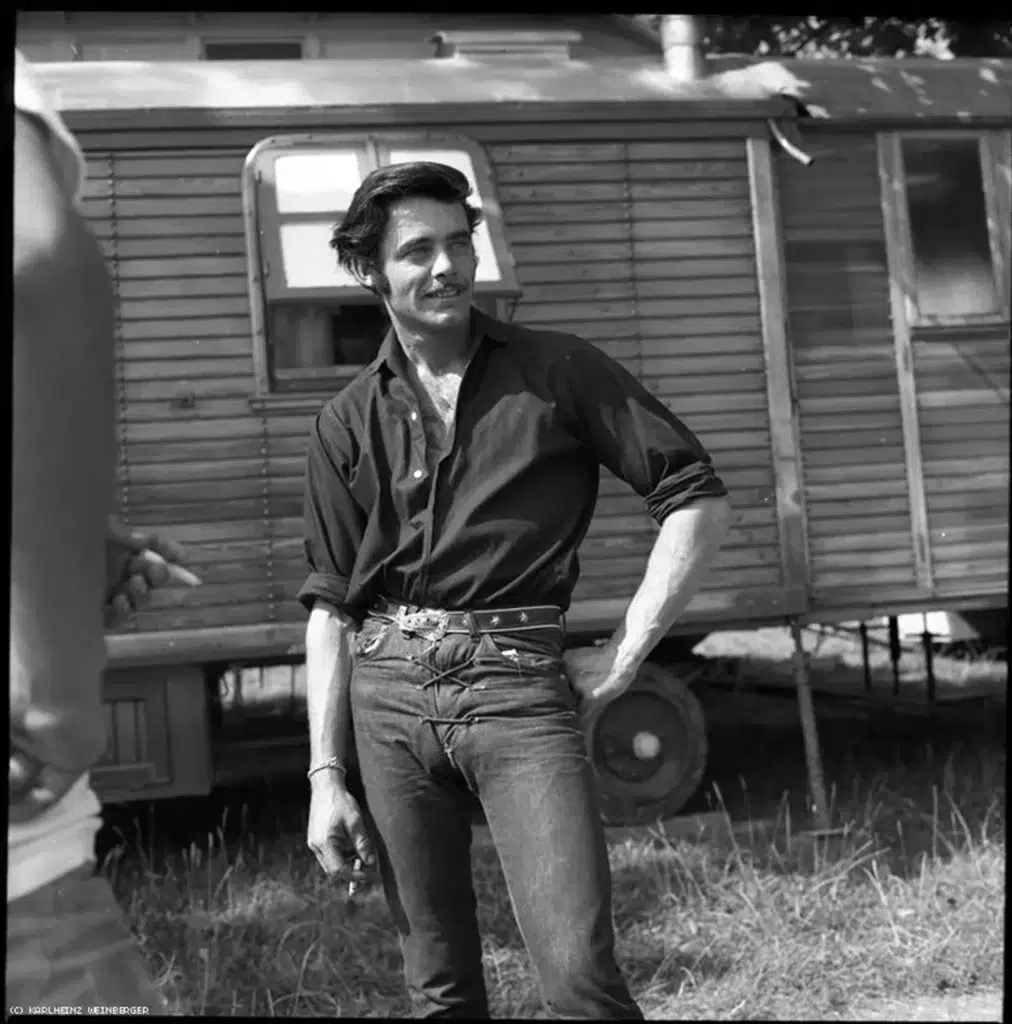
Photo: Karlheinz Weinberger
A Legacy Still Developing
Though Weinberger passed away in 2006, interest in his work has only grown. His photographs continue to resonate with those drawn to bold self-expression and underground style. And thanks to the efforts of curators and fans alike, his legacy is being preserved for a new generation.
To explore more of his work, visit the official Instagram account: @karlheinzweinberger.

Photo: Karlheinz Weinberger
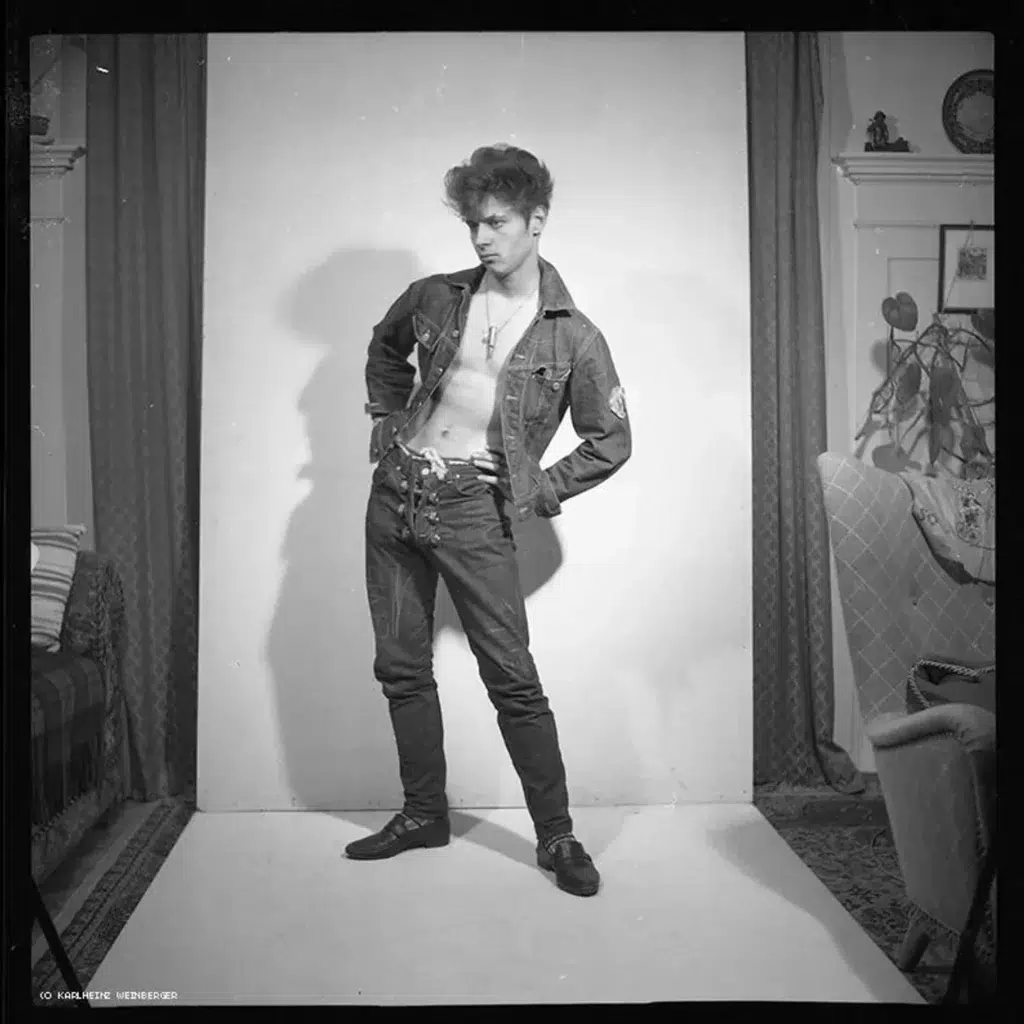
Photo: Karlheinz Weinberger
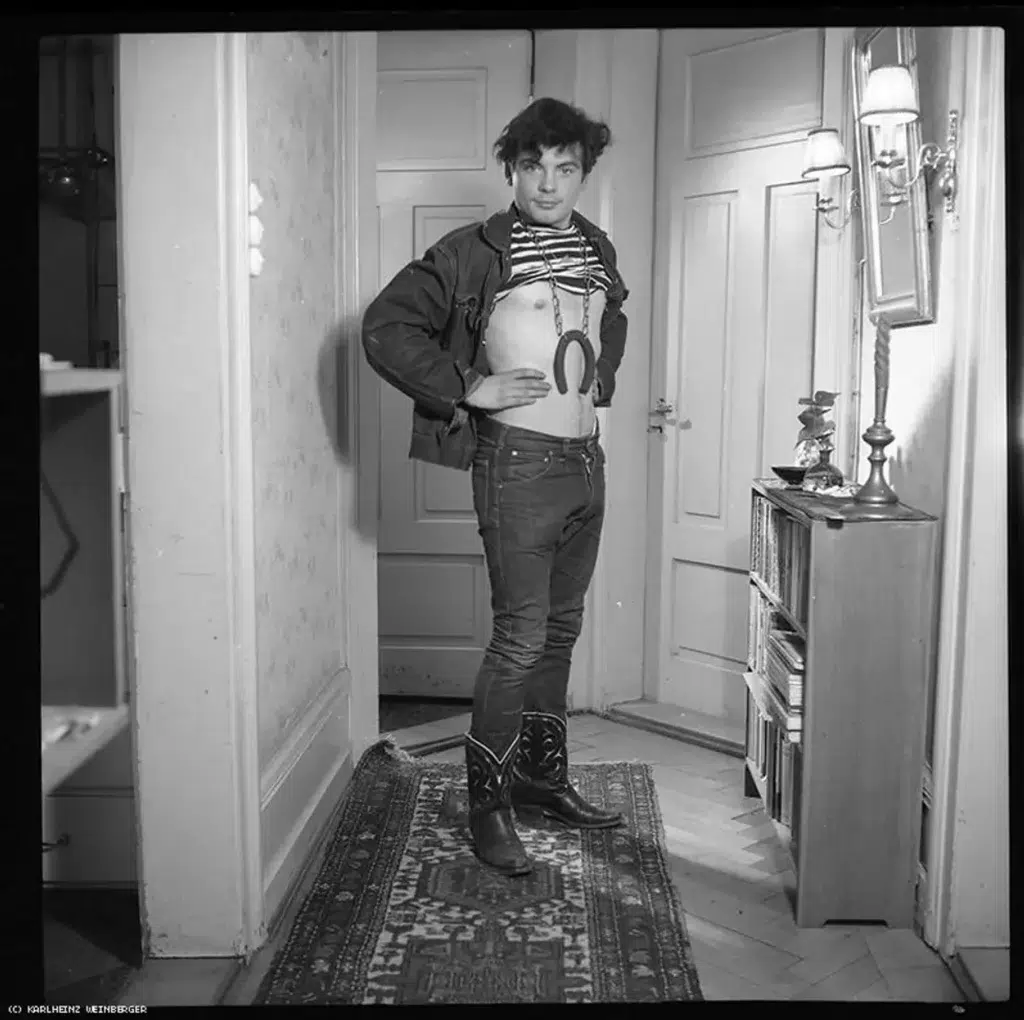
Photo: Karlheinz Weinberger

Photo: Karlheinz Weinberger
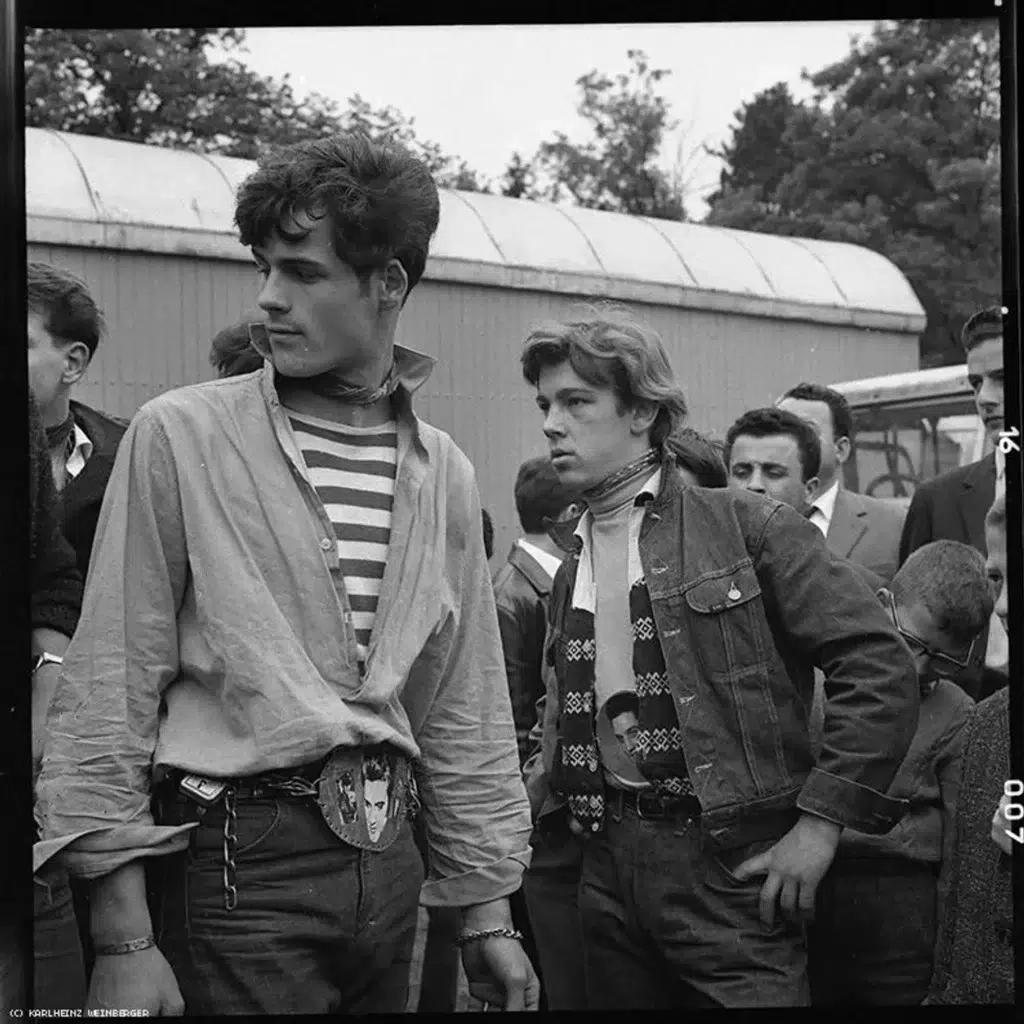
Photo: Karlheinz Weinberger

